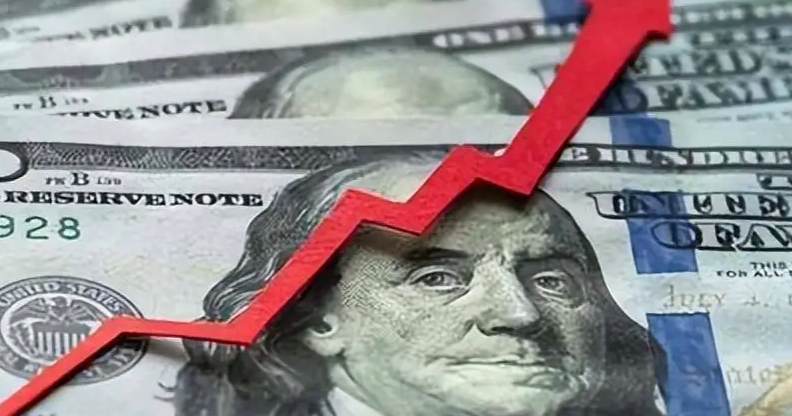The bond market in the United States has been experiencing substantial fluctuations, especially for the ten-year Treasury yield, which has been trending upwards since late 2024. This rise in bond yields can largely be attributed to various factors that influence investor expectations and economic outlook. Among these factors, inflation projections and expectations regarding interest rate cuts have played a part, but the dominant force appears to be the term premium and the uncertainties associated with economic policy.
Understanding the driving forces behind rising Treasury yields requires a closer examination of the concept of term premium. This term premium, along with short-term real interest rate expectations and long-term inflation expectations, contributes to determining the overall yield on Treasury securities. The breakdown of these components reveals a complex interplay of market perceptions regarding economic stability, inflation risks, and the broader macroeconomic landscape.
To begin with, the term premium itself has been on an upward trajectory, which has significantly contributed to the recent spike in yields. This rise can be understood by looking at market dynamics, particularly how investors price in uncertainties about future economic conditions and policy actions. Since December, increases in term premium have outpaced both inflation expectations and the narrowing of interest rate cut expectations, solidifying its role as the primary influence behind recent yield fluctuations.
What does this term premium signal to investors, and what are the underlying factors that are pushing it higher? One primary aspect is the correlation between economic uncertainty and term premium. Higher uncertainty typically leads investors to demand more substantial compensation for holding longer-duration assets. A case in point can be observed from the aftermath of the global financial crisis in 2008, where term premium dipped below zero but began rising sharply again as uncertainties about fiscal policies and economic recovery became pronounced in subsequent years, particularly after 2021.
Moreover, the composition of investors in the Treasury market has shifted notably over the years. A significant proportion of market participants—those classified as price-sensitive investors—are increasingly driving demand and, consequently, influencing term premium. Traditionally, this category excludes central banks and large institutional investors; thus private sector participation becomes crucial. The retreats of overseas governments from buying U.S. debt in recent years, coupled with the Federal Reserve's tightening policy and balance-sheet reduction measures, have further impacted this dynamic, leading to an increased term premium.

Supply-side dynamics of the Treasury market also warrant attention. In the years leading up to the COVID-19 pandemic, Treasury supply pressures were relatively modest. However, the pandemic introduced a unique set of challenges. The subsequent significant increase in fiscal deficits has resulted in elevated levels of Treasury issuance, which in turn has put upward pressure on yields. A notable instance of this occurred in the third quarter of 2023 when a concentrated issuance of Treasury securities led to marked increases in both term premium and yields.
As we ponder the sustainability of these rising term premiums, there are important considerations regarding the economic and policy landscape entering the next presidential term in the U.S. Rising uncertainty surrounding economic policies, particularly at the start of a new administration, tends to elevate volatility in yields. Given that newly elected officials often send out mixed signals about their policy intentions, coupled with uncertainties in monetary, fiscal, and trade policies, the environment for bond yields could turn turbulent.
However, as administration policies begin to stabilize post-inauguration, some of the immediate risk factors may begin to ease. Historical patterns from previous presidential terms suggest that while initial volatility may be heightened, clarity in policy direction can help moderate yields over time. Yet, the legacy of high inflation and fiscal deficits will persist as challenges for the upcoming administration and may continue to influence investor sentiment.
Further clouding this outlook are ongoing challenges in the balance between supply and demand within the bond market. While demand from traditional buyers such as the Federal Reserve and foreign governments remains subdued, persistent high inflation and its impact on the correlation between stock and bond markets are likely to remain a concern. This dynamic affects how institutional investors like pension funds and insurance companies manage their portfolios, particularly regarding risk mitigation strategies against rising interest rates and market volatility.
The year 2025 will bring a wave of maturity for many mid to long-term Treasury securities, raising the question of how this will influence market demand and supply dynamics. Coupled with high fiscal deficits projected in the near future, it can be anticipated that the high levels of Treasury supply will continue to exert pressure on yields.
In summary, as the new presidential administration takes office amid an uncertain economic backdrop, the potential for sustained high volatility in Treasury yields remains palpable. However, as policies are implemented and markets react, the high yields we currently observe may not be sustainable particularly when macroeconomic fundamentals come into play. A decline in economic indicators and responsiveness to evolving fiscal policies will likely shape the trajectory of yields and investor sentiment moving forward.
As these developments unfold, it's essential to remain attentive to potential risks that could further complicate the outlook, including geopolitical tensions, an unexpected slowdown in the U.S. economy, and shifts in Federal Reserve policies that could rejuvenate hawkish stances.
 December 4, 2024
December 4, 2024